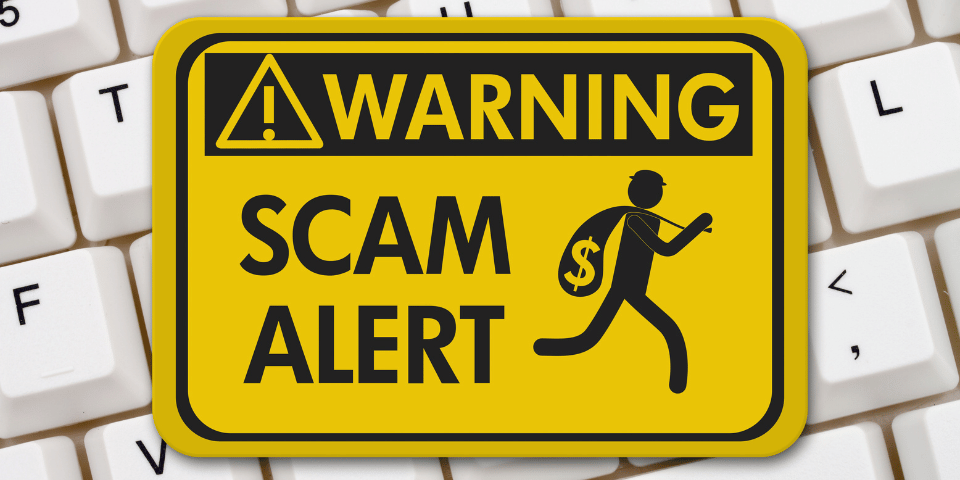Top Amazon Scams to look out for
June 02, 2023

When it comes to convenience, service and variety, nothing beats Amazon. The world’s largest and most popular online marketplace can carry anything from beauty products to a chicken harness with a leash. Yes, that’s a real product on Amazon and you can purchase it! For almost anything you might ever want or need, Amazon most likely has it – and can get it to you in two days or less. But with that convenience comes the unfortunate reality of Amazon centered scams. Below are a few of the top Amazon-specific scams seen so far in 2023 that you should know about.
Gone Phishing
The latest scam of 2023 is what is known as Gone Phishing, where scammers are generating emails and texts to send to Amazon users and stating that their payment had failed on their previous purchase. The scammer will ask you to verify personal and payment information. If you send this information, don’t be surprised if you see fraudulent charges on your bank account within a matter of hours.
If you get an email from “Amazon” asking for this information, you should first verify the sender. You can verify the sender by hovering your curser over the URL and looking for any irregularities, such as amzon.com vs. amazon.com. Hackers are looking for what’s easy and they will send thousands of emails and texts to random people in hopes that even a small number will respond. The safest action you can take is not to click on anything within the email or text and check your Amazon account within your app or on your desktop to confirm firsthand if there is a problem with your payment.
You’re owed a refund
In this scam, an Amazon customer receives a text or email stating that they have been overcharged for a recent purchase and are owed a refund. They are directed to call a phone number and when they call, an alleged Amazon rep will ask to gain access to their computer so they can issue the refund. Doing this can give the scammer full access to files, account information and passwords, and other personal information. If you think you are owed a refund of any kind, it is best to check the status within your secured Amazon account. Don’t ever give anyone your login credentials or other personal information to gain access to your account or computer.
Off-platform payments
This scam can be tricky to spot if you are not watching carefully. This scam involves an Amazon customer being directed to an off-platform payment, usually via a P2P (peer-to-peer) payment platform like Zelle or Venmo. While these platforms may claim to be secure, completing the purchase outside of Amazon’s site or app means losing all payment protection that Amazon provides for purchases. This purchaser will most likely end up with a faulty product or not receive anything at all. If you purchase something through Amazon, make sure to only conduct payments through the Amazon site. Authentic Amazon sellers will not ask for outside payment through money transfer apps or other payment options. Genuine Amazon Pay website are always hosted on one of the following domains:
- pay.amazon.com
- payments.amazon.com
- authorize.payments.amazon.com
Amazon Prime Video scams
The Amazon Prime Video Scam relates to streaming services offered as part of Prime membership. In this instance, a consumer looking to set up Amazon Prime Video on their SmartTV is lured into bogus sites by clicking on pop-up ads related to setting up their Prime Video. These fake sites look identical to Amazon’s SmartTV setup page, so the victim believes they’ve landed on the correct page.
This scam prompts the user to call a number that the bogus site provides. The call will be answered by a person who represents themselves as an Amazon representative and instructs the consumer to provide account information, like their two-factor authentication code. When this information is shared, the scammer will then have access to their account, which often includes stored payment information. Remember never to share share your passwords, authorization codes or login credentials unless you have initiated the call or chat session.
Mystery boxes, prizes and crazy-low deals
The scam may take the form of a “mystery box” sold on Amazon, prizes that the victim has supposedly “won” or deals that practically gives items away for free, which is why the saying “it sounds too good to be true” is usually accurate. In each of these cases the victim receives a message - allegedly from Amazon - claiming that they have won a prize. The victim will be directed to click on a link or call a number to receive the prize. They will then be prompted to provide personal information or download malware onto their computer, which can allow the scammer access to their files. You should avoid such scams by never following a seller’s directions that lead to a site outside of Amazon. Instead, you can verify the validity of such offers by contacting Amazon Customer Support directly.
Report all Suspicious Activity
If you have fallen victim to any of these scams, you should always report it. The following link contains information on how to report fraud, scam, phishing, and spoofing attempts involving scammers impersonating Amazon representatives or sellers. You can and should also report scams of any kind to the Federal Trade Commission.
Unfortunately, online scams are becoming more and more prevalent, but don’t let that stop you from doing business with the largest online retailer – or enjoying the perks of convenient and free two day shipping. Your best defense as an online consumer is to stay educated about trending scams, make smart decisions, and protect your personal information and privacy. For more information, visit our Fraud Prevention page and learn about additional resources available to help you protect yourself in a mostly digital world.




